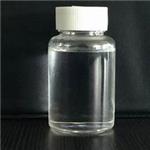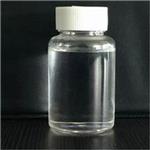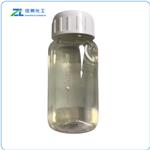Description
Aminoethylethanolamine is a component of colophony
in soldering flux, which may cause contact and
airborne contact dermatitis in workers in the electronic
industry or in cable jointers.
Chemical Properties
Aminoethylethanolamine is combustible, colorless, liquid with an ammonia-like odor.
Chemical Properties
CLEAR VISCOUS LIQUID
Uses
Textile finishing compounds (antifuming
agents, dyestuffs, cationic surfactants), resins, rubber products, insecticides, and certain medicinals.
Uses
It is used as an important intermediate in the manufacture of lube oil additives, fuel additives, chelating agents, surfactants and fabric softeners among other applications. N-(2-Hydroxyethyl)ethylenediamine [N-(2-Aminoethyl)ethanolamine] is used to study the aerobic biodecomposition of amines in hypersaline wastewaters.
Uses
N-(2-hydroxyethyl)ethylenediamine (hydeten) or [
N-(2-aminoethyl)ethanolamine] can be used as:
- A precursor in the synthesis of room-temperature ionic liquids, acetate and formate ammonium salts of N-(2-hydroxyethyl)-ethylenediamine.
- A ligand in the preparation of polymeric cyano-bridged platinum(II)complexes, ligand-copper(II)carbohydrate complexes and cyano-bridged Ni-Pt and Cu-Pt coordination polymers.
It can also be used to study the aerobic biodecomposition of amines in hypersaline wastewaters.
General Description
A clear colorless liquid with an ammonia-like odor. Corrosive to tissue. Combustible, but may be difficult to ignite. Less dense than water. Vapors heavier than air. Toxic oxides of nitrogen produced during combustion. Used to make other chemicals.
Air & Water Reactions
Water soluble. Hygroscopic.
Reactivity Profile
2-(2-Aminoethylamino)ethanol is an amine and alcohol. Amines are chemical bases. They neutralize acids to form salts plus water. These acid-base reactions are exothermic. The amount of heat that is evolved per mole of amine in a neutralization is largely independent of the strength of the amine as a base. Amines may be incompatible with isocyanates, halogenated organics, peroxides, phenols (acidic), epoxides, anhydrides, and acid halides. Flammable gaseous hydrogen is generated by amines in combination with strong reducing agents, such as hydrides. 2-(2-Aminoethylamino)ethanol is hygroscopic.
Health Hazard
Skin contact will cause mild irritation; eye contact will cause more severe irritation.
Fire Hazard
2-(2-Aminoethylamino)ethanol is combustible.
Contact allergens
Aminoethylethanolamine is a component of colophony
in soldering flux, which may cause contact and airborne
contact dermatitis in workers in the electronic
industry or cable jointers.
Potential Exposure
Used to make textile finishing compounds, dyes, resins, rubber, insecticides, medicines, and oth
Shipping
UN2735 Amines, liquid, corrosive, n.o.s, or Polyamines, liquid, corrosive, n.o.s., Hazard class: 8; Labels: 8-Corrosive material, Technical Name Required.
Purification Methods
Distil the amine twice through a Vigreux column (p 11). Redistil it from solid NaOH, then from CaH2. Alternatively, it can be converted to the dihydrochloride and recrystallised from water. It is then dried, mixed with excess of solid NaOH and the free base is distilled from the mixture. It is finally redistilled from CaH2. [Drinkard et al. J Am Chem Soc 82 2992 1960, Beilstein 4 IV 1558.]
Incompatibilities
Contact with cellulose nitrate may cause fires upon contact. Reacts with Oxidizers, strong acids.






